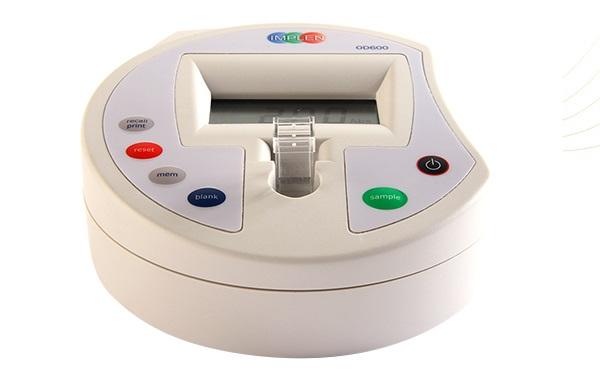Understanding Od600 Measurements: A Comprehensive Guide

In the world of microbiology and molecular biology, understanding the growth and concentration of cells in a culture is paramount. One of the key methods for quantifying cell density in liquid culture is by measuring Optical Density at 600 nanometers, commonly referred to as OD600. This guide aims to shed light on OD600 measurements, their significance, applications, and the techniques involved.
What Is OD600?
OD600, or Optical Density at 600 nm, is a measurement used to determine the concentration of cells in a liquid culture. It relies on the principle that cells scatter and absorb light, particularly at a wavelength of 600 nanometers. The more cells present in the culture, the more light is scattered and absorbed, resulting in a higher OD600 reading.
Significance Of OD600
OD600 measurements hold significant importance in various fields, including microbiology, biotechnology, and biochemistry. Here are some key reasons why OD600 is a valuable tool:
- Monitoring Cell Growth
OD600 is commonly used to monitor the development of microorganisms in culture, such as bacteria, yeast, and algae. By measuring OD600 at different time points, researchers can create growth curves, which provide insights into the kinetics of cell growth and help optimize culture conditions.
- Assessing Cell Viability
In addition to measuring cell density, OD600 can also provide information about cell viability. A sudden drop in OD600 may indicate cell death or a change in the metabolic state of the culture, alerting researchers to potential issues.
- Standardizing Experiments
OD600 measurements are used to standardize cell concentrations in experiments. Researchers can adjust the cell density to a specific OD600 value, ensuring consistent starting conditions for various assays, such as gene expression studies or protein production.
- Bioprocess Control
In industrial bioprocessing, OD600 is a crucial parameter for monitoring and controlling fermentation processes. It allows for real-time assessment of cell growth, helping operators make adjustments to maintain optimal conditions for product yield.
How To Measure OD600?
To measure OD600 accurately, follow these steps:
Step 1: Prepare Samples
Start by taking samples from your culture. Be sure to handle them carefully to avoid contamination. You may need to dilute the samples if the OD600 reading falls outside the linear range of the spectrophotometer.
Step 2: Use A Spectrophotometer
A spectrophotometer is the primary tool for measuring OD600. Set the wavelength to 600 nm, and use a blank solution (typically the culture medium without cells) as a reference. Place your sample in a cuvette and insert it into the spectrophotometer.
Step 3: Record The Reading
Once the spectrophotometer stabilizes, record the OD600 reading. This number represents the absorbance of light by the cells in your sample.
Step 4: Calculate Cell Concentration
To convert OD600 to cell concentration, you’ll need a standard curve. This curve is generated by measuring the OD600 of samples with known cell concentrations. By plotting these values, you can estimate the cell concentration of your sample.
Factors Affecting Od600 Measurements
Several factors can influence OD600 measurements, and it’s essential to be aware of them:
- Cell Shape And Size
Cells with different shapes and sizes scatter and absorb light differently. Therefore, OD600 measurements may not be directly comparable between different microorganisms.
- Cell Density
Extremely high cell densities can result in inaccurate OD600 readings, as the cells may scatter light in a non-linear manner. Diluting the sample may be necessary in such cases.
- Background Absorbance
The culture medium or any contaminants in the sample can contribute to background absorbance. Using a blank as a reference helps account for this background.
Applications Of OD600 Measurements
OD600 measurements find applications in various fields:
- Microbial Genetics
Researchers use OD600 to standardize cell concentrations when performing genetic experiments, such as transformation or transfection, to ensure consistent results.
- Drug Discovery
In pharmaceutical research, OD600 is used to assess the growth of pathogenic microorganisms or cells in the presence of potential drug candidates.
- Bioproduction
Biotechnology companies use OD600 to monitor cell growth in bioreactors during the production of biofuels, pharmaceuticals, and industrial enzymes.
- Environmental Studies
In environmental microbiology, OD600 measurements are used to examine microbial populations in natural habitats and characterize their reactions to diverse situations.
Conclusion
Optical Density at 600 nm, or OD600, is a vital tool in microbiology and molecular biology for quantifying cell density in liquid cultures. It provides valuable insights into cell growth, viability, and concentration, making it indispensable in research, bioprocessing, and a range of scientific applications.
By following proper techniques and understanding the factors that can affect OD600 measurements, researchers can harness the power of this simple yet invaluable tool to advance their studies and applications in the biological sciences. Whether you’re studying bacteria in a laboratory or optimizing a bioproduction process in an industrial setting, OD600 measurements will continue to play a central role in your work, helping you unlock the mysteries of cellular growth and behavior.
